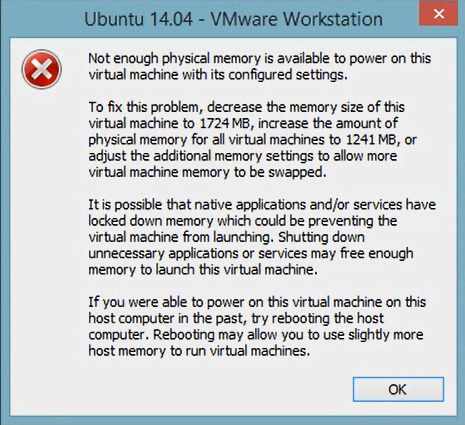

In cases covering the whole spectrum of solutions, there is a likeliness that a need arises to use an external USB drive to run virtual machines from. For this reason, the VMware suite has many products that are suitable for specific personal level solutions to much larger scale solutions like those for corporation level IT. I have referred to USB flash drives as “traditional” because they are solid state drives – or SSD – and I want to make sure to differentiate between these older drives and the newer external SSD’s using USB 3.0 technology.Īs I mentioned before, the range of virtual machine users is wide. We will only consider USB 2.0 and newer drives since even the 2.0 technology is becoming outdated. This could be the difference between being able to complete tasks in a practical manner or the cause of poor productivity. It is imperative to know the differences in the older and newer USB technologies with relation to traffic throughput. This means that a USB 3.0 drive can connect to a host machine that is only compatible with a 2.0 connection, but it is important to realize that the maximum traffic throughput is limited to USB 2.0 capabilities. While it plays a major role in performance, the USB speed throughput is limited by your laptop or computer’s USB hardware compatibility. Technological advances have seen the connection go from USB 1.1 to USB 2.0 and currently USB 3.0 (with reference to Type A connectors).

The other major performance attribute that doesn’t come from the host machine is the external drive’s USB technology – essentially, their traffic capability. Primary factors to consider when it comes to USB external drives are their read-write speeds and storage space. That said, it is important to take into consideration the objective of your virtualization tasks when choosing between a traditional USB 2.0 flash drive, an external HDD and an external SSD. While VMs use the host machine’s resources, the chosen external drive plays a role in performance as well. The type of USB drive to run your virtual machine on depends on the task at hand. Once these simple steps are completed, find the VM within VMware and change its destination location accordingly so that it is pointing to the correct USB port. Users/AllAboutGadgets/Virtual Machines.localized/ (similarly, look for the “.vmdk” extension) If using Fusion on a Mac, the default location is: Make sure the desired VM is powered off when making this move. The VM file that needs to be copied over will have an “.vmdk” extension. For example, in VMware Workstation, the default location is:Ĭ:\Users\username\Documents\Virtual Machines The first step to relocating your virtual machine(s) to an external USB drive is learning where VMware stores them. Getting VMware Virtual Machines to run on USB It’s fast, which is one of the most important factors to for virtual machines to run off a USB port. Let’s investigate some advantages and disadvantages with using different external drives in relation to your specific virtualization needs.īy the way this is the most recommended drive to run virtual machines from. In fact, utilizing your USB port to run VMware virtual machines is more versatile than you may realize. This solution is not limited to solving storage space issues. For more intensive tasks, the practical solution is to use an external SSD or HDD with a USB 3.0 connection. For the simplest tasks, you can even utilize a VM from a traditional USB 2.0 flash drive. You have multiple options to run VMware VMs from a USB drive.

For me, being able to run VMs from a USB drive is the best and most economic option to get over this hurdle.Ĭan you run VMware virtual machines from a USB? In short, yes. Disk space is a limitation that you may come across in the host machine, especially when running multiple VMs.
#There is not enough physical memory to run vmware on mac windows
Virtual machines have a variety of users ranging from developers who may use them to safely test different operating systems to students needing to use a Windows application from their MacBook. Run VMware Virtual Machines from a USB Drive


 0 kommentar(er)
0 kommentar(er)
